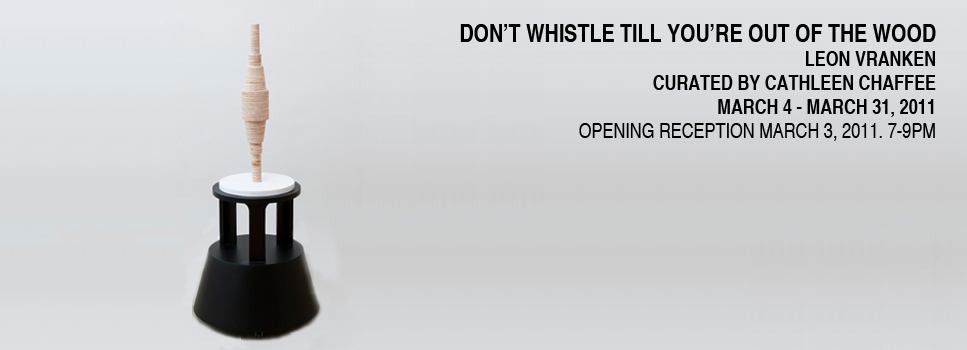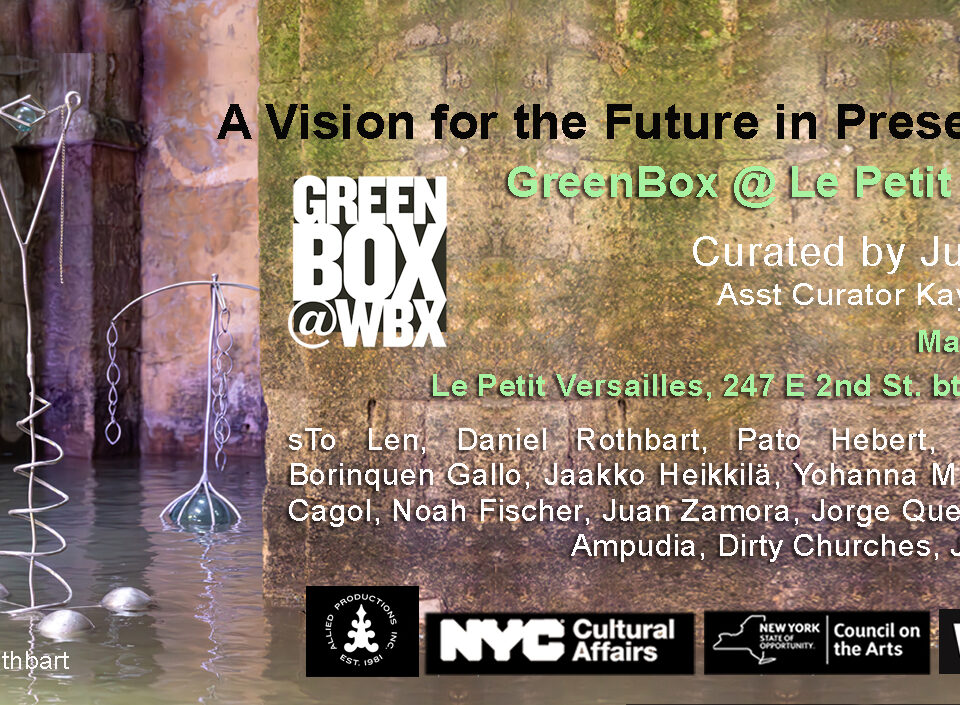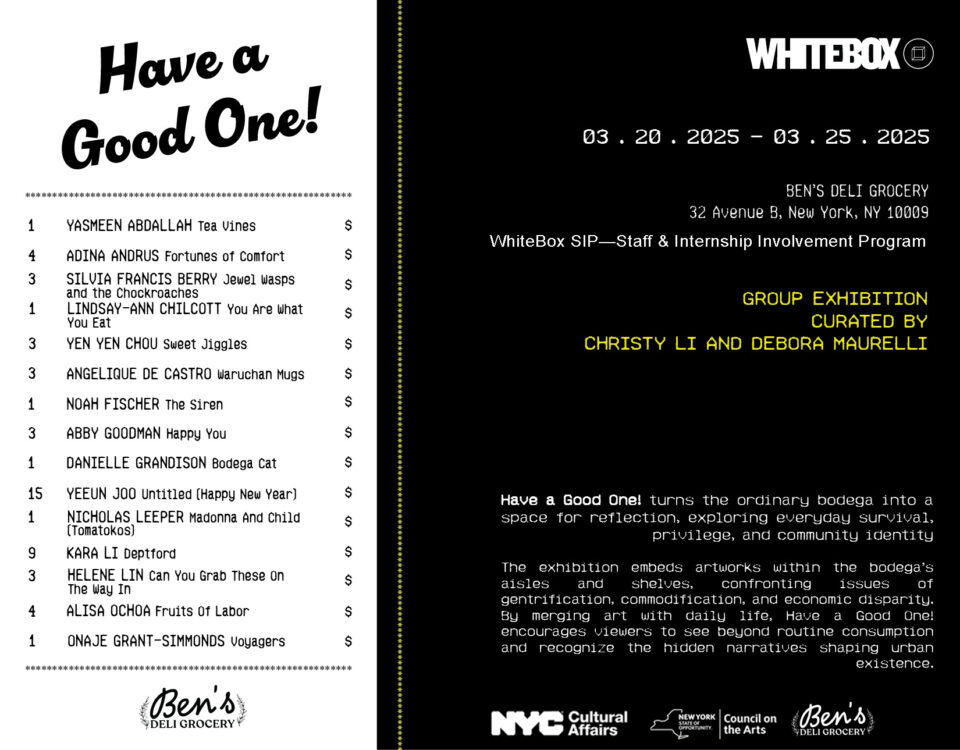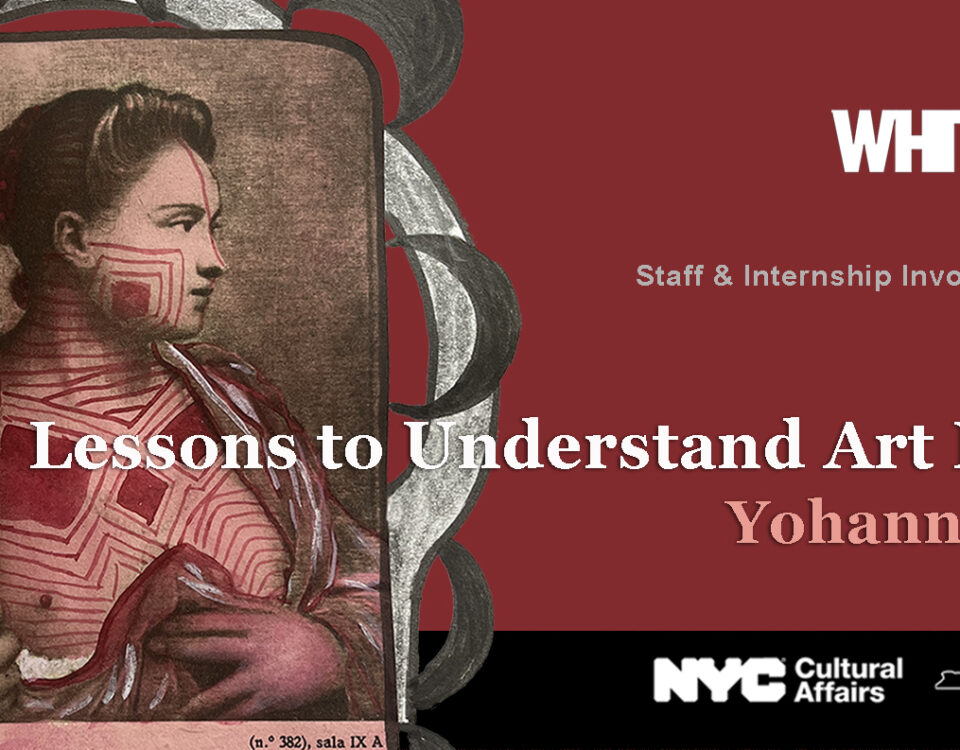Robert Rauschenberg and Ushio Shinohara: Reconstructing an Encounter
February 11, 2011Braco Dimitrijevic: Louvre is my studio, street is my museum
April 6, 2011DON’T WHISTLE TILL YOU’RE OUT OF THE WOOD
LEON VRANKEN
CURATED BY CATHLEEN CHAFFEE
MARCH 4 – MARCH 31, 2011
OPENING RECEPTION MARCH 3, 2011. 7-9PM
BOZAR -‐ Centre for Fine Arts of Brussels and WHITE BOX are proud to announce the solo exhibition of Leon Vranken, Don’t whistle till you’re out of the wood. The exhibition is curated by Cathleen Chaffee, Horace W. Goldsmith Assistant Curator of Modern and Contemporary Art at the Yale University Art Gallery.

Leon Vranken received the Young Belgian Painters / Centre for Fine Arts – Award in 2009, creating the opportunity to organize a solo show at WHITE BOX in New York. It is the second time that BOZAR has collaborated with WHITE BOX: in 2009, the gallery held a solo exhibition of the work of Pieter Vermeersch. Vranken will present a simultaneous solo show at The Armory Show in the booth of Stella Lohaus Gallery.
Trained as a cabinetmaker, Leon Vranken (b. 1975, Maaseik, Belgium) possesses craft skills rarely seen in contemporary sculptural practice. Many works, such as his carved and transected hi-‐fi speaker cabinet (2009), resemble well-‐made useful objects. These familiar things he chooses as subjects are also often spheres, cubes, and pyramids—Platonic geometric givens. Despite veristically recreating and then lightly tweaking everyday items as well as the “readymade” formal building blocks of sculpture, Vranken is less interested in the readymade itself than he is in function and its perpetually unstable relationship to fine art.
In stripping ordinary objects of their use value, Duchamp humorously literalized what contemporaries in the world of architecture and design such as Adolf Loos had been advocating: art and decoration should be divided from functional objects and architecture, thus banishing any misapprehension that useless decorative flourishes are the purview of a good designer. Thereafter, the memory of the readymade’s former function would call up this distinction with an emphasis on the object’s current use; as Karl Kraus wrote: “All that Adolf Loos and I did was to show that there is a difference between an urn and a chamberpot…But the others are divided into those who use the urn as a chamberpot and those who use the chamberpot as an urn.”
Vranken’s untitled carved wood columns (2011) prompt a new consideration of the volumetric sculptural qualities of pedestals and bases, devices which not only enable a sculpture to appear before the public, but which also lend symbolic assistance to artists trying to transform common objects into art works. The twelve components display progressively more complex marquetry, with the final profiles suggesting Kasimir Malevich’s plaster architectural models. Like Malevich’s Arkitektons, each element of the sculpture has a two-‐fold metonymic presence, resembling both a column and an entire skyscraper. By straddling categories of sculpture and sculptural support, the columns recall an earlier work of Vranken’s. In Three Fold (2008), a paint-‐saturated roller is wedged between the wall and the floor, exploring territory mined by Richard Serra with his Prop sculptures. Following on Serra’s annexation of sculptural space to the painterly domain, Vranken uses his sculpture to make a painting: finding the sculpture’s perfect equilibrium between wall and floor necessitates rolling it at least a few inches. This creates a unique site-‐specific hybrid: a humorous monochrome.
The title of Leon Vranken’s first New York solo exhibition belongs to a group of idioms that warn against premature optimism or pessimism. Counting one’s blessings is a distraction from immediate discomfort or loss, while not enumerating un-‐hatched chickens guards against overconfidence. As the exhibition’s title makes clear, the sculptures in Don’t whistle till you’re out of the wood will call on viewers to pay careful attention. Objects may feel familiar here, but the nearer we get, the more demanding the topography becomes.
-‐Cathleen Chaffee
This exhibition has been organized by BOZAR – Centre for Fine Arts of Brussels and supported by the Stella Lohaus Gallery, Antwerp
Located in the heart of Brussels, in close proximity to the European institutions, the Centre for Fine Arts is a success story and a flagship for the fine arts in Belgium and internationally. The Centre, known as BOZAR and housed in a famous Victor Horta building, has an outstanding program of world-‐class activities and events. As a Federal organization directly under the office of the Prime Minister, it is the greatest portal offering citizens from the three Belgian language communities access to prestigious institutions worldwide. One such program is the Young Belgian Painters Award, organized on a biennial basis since 1950. The Young Belgian Painters Award has become a platform for young artists to launch an international career and is one of the major events for the contemporary art scene in Belgium, like the Prix Marcel Duchamp in Paris organized by the Centre Pompidou, the Musée National D’art Moderne and FIAC, the Turner Prize in Great Britain awarded at Tate Britain, London or the Vincent Award in The Netherlands.
For more information, please contact: Susie Lim of White Box at 212-‐714-‐2347 or susie@whiteboxny.org, or visit www.whiteboxny.org.




